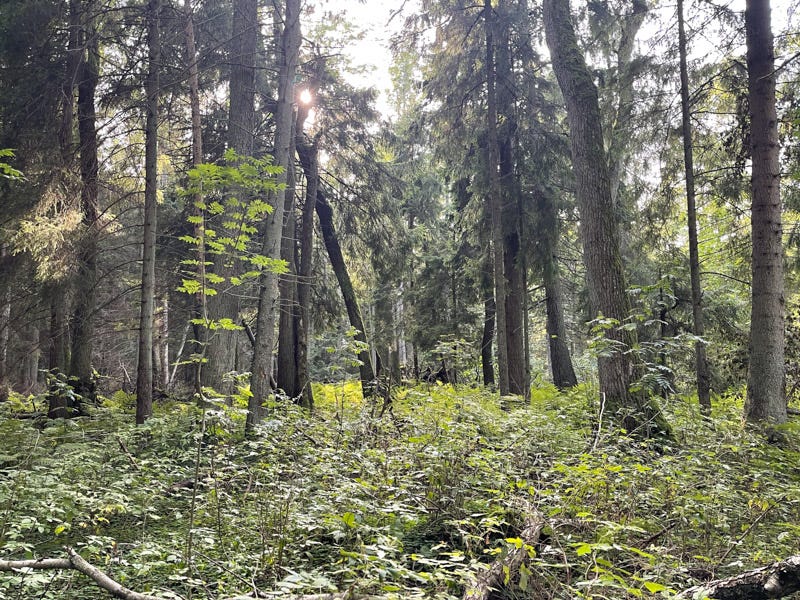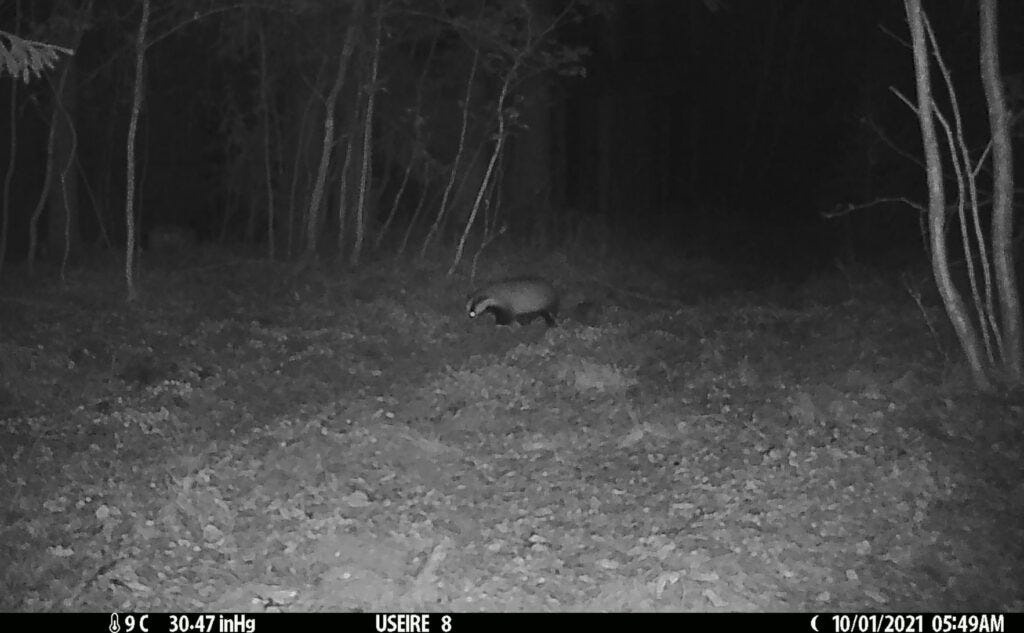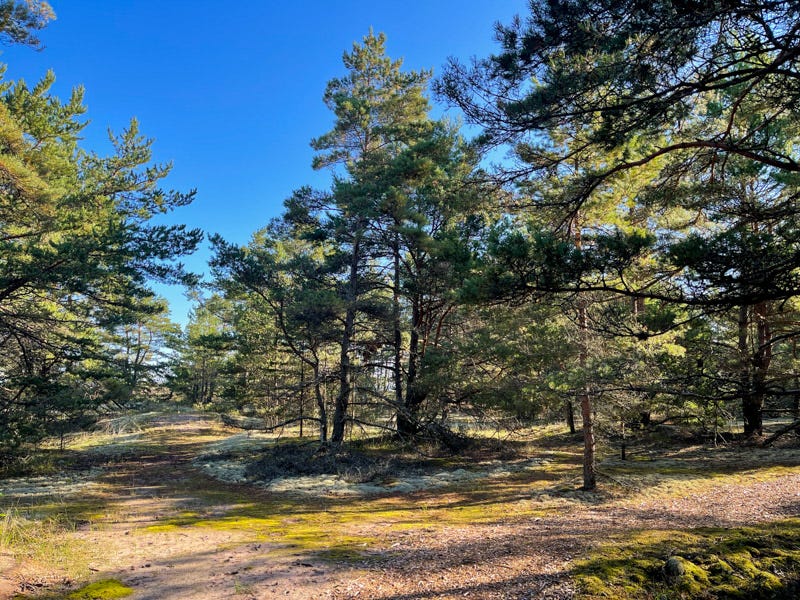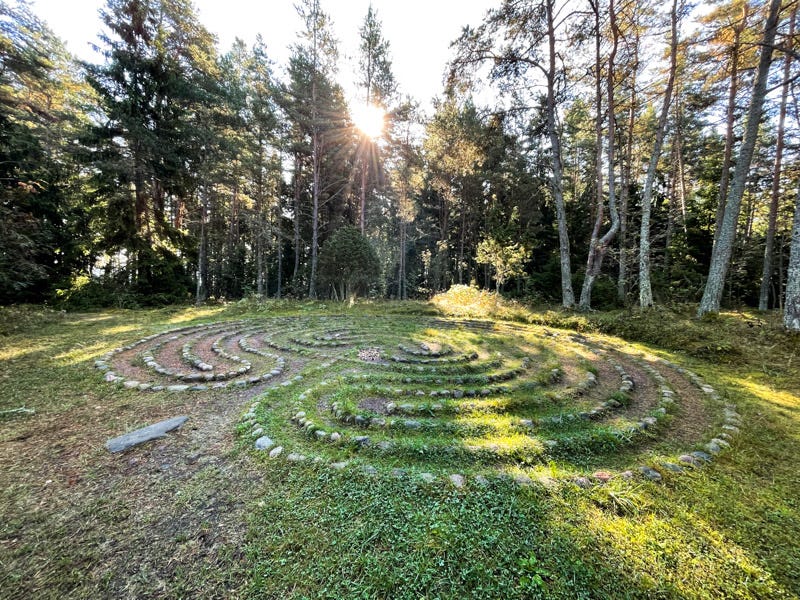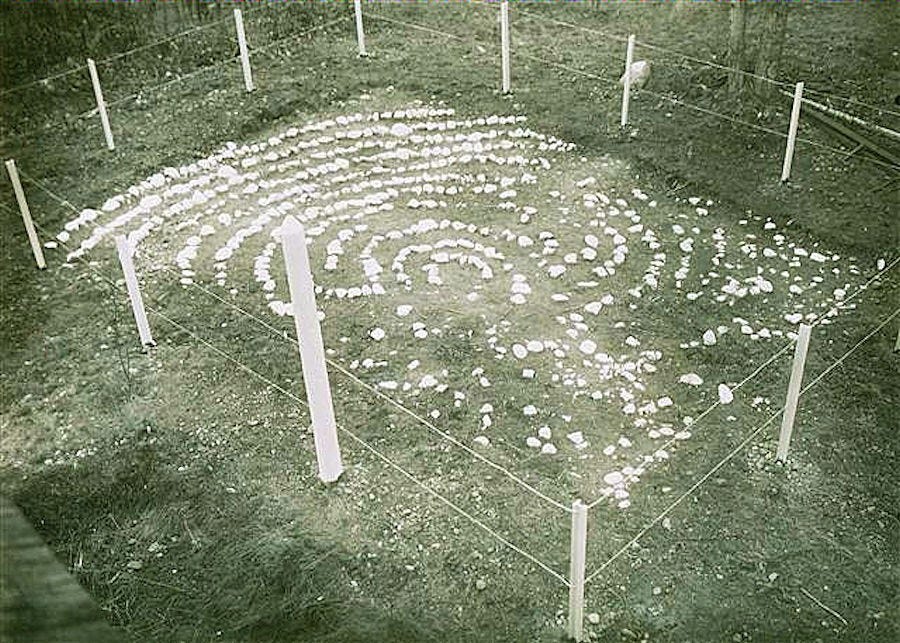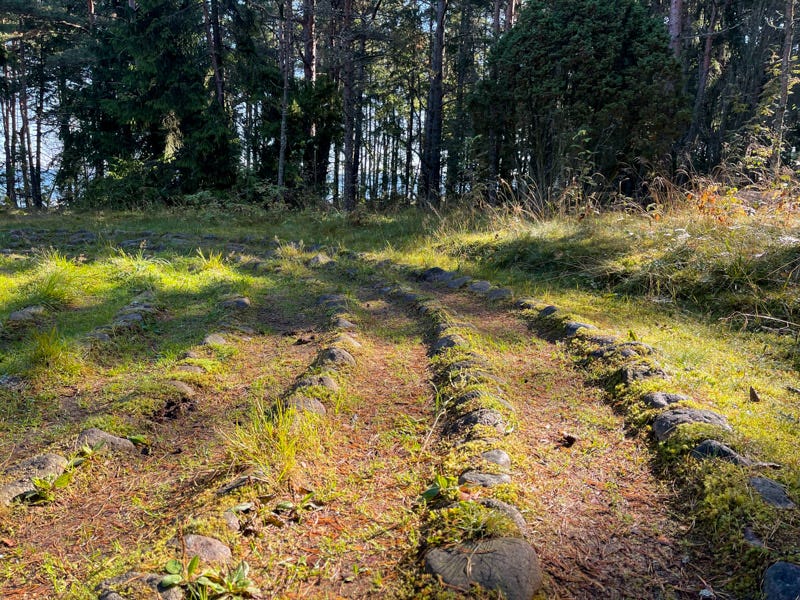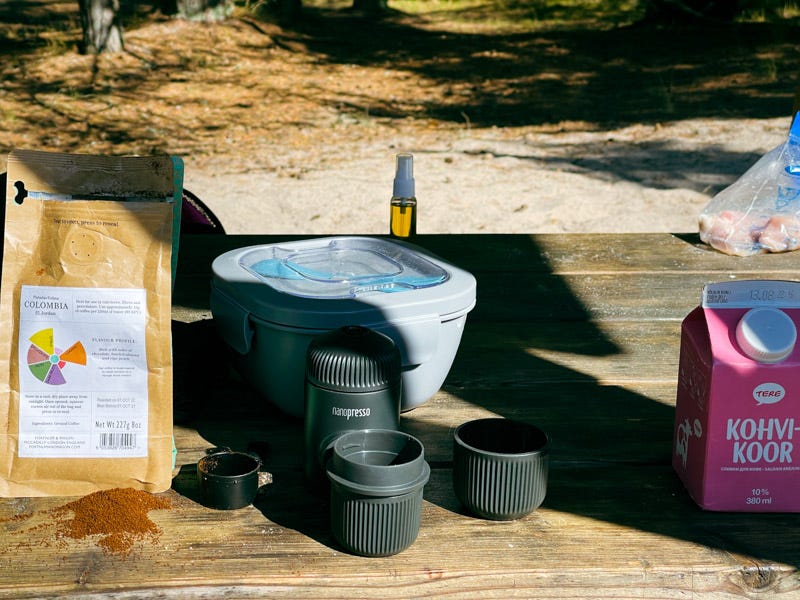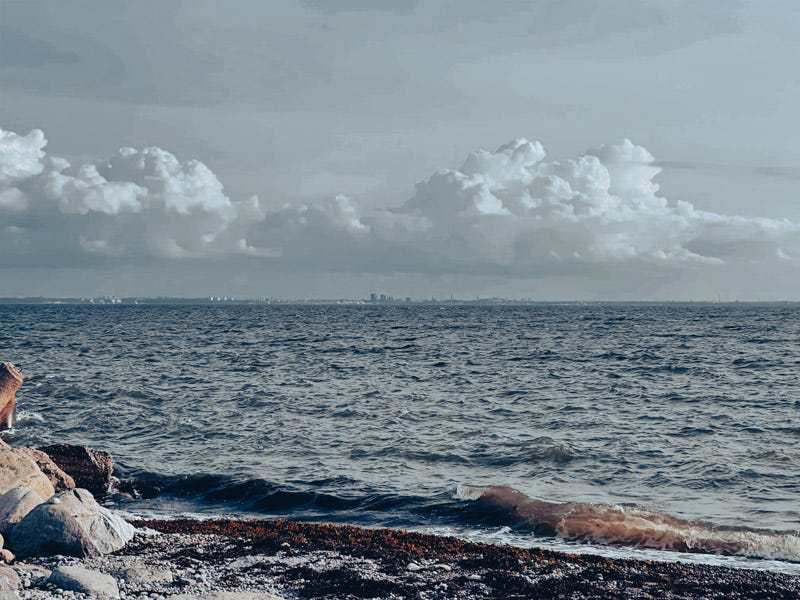When You Wish Upon a Stone
The reason that my backpack is hot pink is not because I fell in love with the color or even to ensure that I am visibly not-a-bear while hiking through the forest during hunting season. It’s because I walked into Sportland looking for a backpack and the neon-pink one was 50% off.
I was glad for it this morning, though, as it made it possible to spot my upside-down backpack lying badly camouflaged amongst the pine trees. Something or possibly a number of somethings, had gotten up onto the table and shoved the bag onto the sandy ground and then dragged it away from the campsite and into the forest.
This is the final part of a three part post about camping on Aegna and does not stand alone. You can catch up here:
Part One: Six Words of Russian
Part Two: A Dark Night on a Small Island
No large mammals have been spotted on Aegna for a decade or two, although the carcasses of wild boar are still sometimes found on the western coastline. A moose crossed over the ice a few year years ago but left again before the thaw rather than risk being stranded on the island. And there was a beaver who arrived one winter and attempted to build a den at the dock; however the beaver’s efforts were cruelly destroyed once the motorboats returned to the port in the Spring; it is unknown what became of the beaver. There is at least one fox, which I have said hello to on two occasions. Raccoon dogs have also been seen on the island, although not by me. You might know them better known as the tanuki, which the Japanese believe to be magical. Thirty-five raccoon dogs were introduced to Latvia in 1948 for fur farming and they seemed to have liked the Baltics as there are now over a hundred thousand of them. If the Japanese representations as the trickster god are to be believed then raccoon dogs could certainly be mischievous enough to be interested in my pack but it would require a small herd of them to push it off the table and drag it into the woods.
I contacted the Tallinn Information Desk to see if they had any idea.
“You had a really special experience,” said someone who identified herself as an Information Specialist. “In Aegna island are living actually wild goats, wild boars, foxes and raccoon dogs. So, maybe some of these animals came to visit you. Or just some human being.”
This did little to alleviate my curiosity, let alone narrow down the options. Worse, while writing this essay, the aegna.ee website updated their list of wild game on the island to say that as of 2021, there is also a badger. It was spotted on a trail camera, eyes glowing in the dark. Badgers don’t climb trees but could one get onto the picnic table? I have no idea.
Ten possible backpack thieves:
My friend the fox
More Russians offering beer
Invisible island goats
A lost moose
Cuban drug runners
One very strong owl
A badger
The broad-shouldered men who pretended to check on me shortly before dusk but really just wanted my hot-pink backpack
The reanimated corpse of a wild boar
An unknown number of raccoon dogs
I was almost afraid to look at the time-lapse film from my tiny camera. If any of the above list had been snuffling around my tent, I wasn’t sure I wanted to know about it. However, the footage was tranquil, showing the sky slowly darkening and my light turning off. It was only watching the three second video for the second time that I spotted the fireflies hovering over my tent.
Except that… I’ve never seen fireflies in Estonia. Maybe, I thought, they were eyes glinting in the dark; bats or owls. But then I remembered that the images were taken every two minutes: whatever had been flickering there was not just passing by but must have been there for a half an hour or more.
I added forest sprites to my list of possibilities.
At least I hadn’t lost anything; the backpack was well made and the contents were untouched. It was time to move on with my life and obsess about a new problem, namely, whether I should make a wish in the center of Aegna’s labyrinth. I picked up my water bottle to refill at the fountain on the other side of the island and visit the oldest structure on the island.
The labyrinth is believed to have been built between the 12th and the 15th century which meant it could be almost a thousand years old. It is one of five stone labyrinths in Estonia found on islands near the coast in areas settled by the Estonian Swedes. They are said to be magical; the fisher-folk would follow the labyrinth before going out to see to ensure good winds and a safe return. Tradition holds that one should enter the labyrinth alone and barefoot, mindfully following the maze without crossing the stones, which would bring misfortune. On one of the other islands, the elders warn that if you enter the labyrinth, you may never come out again. Here on Aegna, they say that if you follow the path at sunrise or sunset, you could make a wish when you reached the center.
There were no details as to whether this wish would actually come true. More worryingly, it wasn’t clear whether one should perhaps not make a wish if one had, for example, slept straight past sunrise and shown up five hours late.
And what to wish for? Something trivial, in case I was already doomed? As I hiked across the island, sunbeams piercing through the dark pines, I wished I had gotten up earlier. I wished I had a cup of coffee. I wished that I was in better shape. I wished that I would think of a better wish before I got there.
The labyrinth is now easily found on a small field near blocky ruins of military batteries. It was while building them in 1931 that an Estonian lieutenant commander discovered the labyrinth which existed only in the island lore and had been believed lost. It was protected with a fence and photographed.
In the chaos of the second world war, it was lost a second time and presumed destroyed. A researcher attempted to find it in 1977 but said there was nothing to be found.
However, in 2009, two residents of the islands set up a new search for the lost labyrinth. This time, they discovered a circular trail of rocks buried under the roots of young pine trees. The islanders began to excavate the labyrinth, tracking the pattern of 10-20 kg stones buried in the ground.
Archaeologists soon descended upon the scene and asked for the remains to be left as they were. But they were too late, the local residents had already begun gathering stones from the nearby beaches to rebuild the labyrinth in hopes of attracting tourists to visit the magical maze.
That wish, at least, came true, as here I was, walking barefoot through the cold, wet grass and attempting to be mindful.
It took me about five minutes to follow the path to the center; 12 walls and 11 paths made up of 960 stones. At the center was a small pile of copper coins and individually wrapped Kalev chocolates. I didn’t have anything to place on the pile other than perhaps a used sock; no one had said anything about leaving an offering.
It seemed bad form to wish for one of those chocolates and besides, they were probably smothered in ant poo.
For hundreds of years, people had been following this pattern just for the sake of following it, a journey with no destination. There was nothing that I could think to wish for that didn’t feel trivial in the light of that history.
I balanced carefully in the wet grass for a moment longer and then hurried back along the trail. Tugging my socks over my damp feet, I cursed whoever it was who thought that I had to do this barefoot but hadn’t mentioned leaving a gift. Now I was cold and damp and still hadn’t had a wish and on top of everything else might have offended the labyrinth magic for the sake of a two cent coin.
Back at my campsite, I built a blazing fire and filled my charity-shop metal kettle with the water I had drawn. A motorboat dumped a load of shirtless young men for a game of volleyball on the beach. A few day-trippers took the table across the way for a picnic lunch. The midday sun was finally high enough to warm my toes.
There was now nothing for me to do and nothing to achieve; my biggest problem was how to get the kettle hot enough to boil water for the hand-held espresso pump that my daughter had bought me for my birthday. The answer turned out to be lots of pine cones and patience.
Half an hour later, I was sipping an espresso on a deserted campsite on a small island in the Baltic Sea. It was very good. So was swimming with the other tourists on North Beach and my lunch of grilled flatbread covered with ham and cheese and ash.
I pulled the stakes out of the tent and packed my things, ready for multiple trips back across the island to the port.
Standing on the south coast of Aegna, Tallinn was just a grey smudge in the distance. For the moment, it felt otherworldly, like only the island was real and city life was something very far away, something I had heard of but could never completely understand.
Then the ferry arrived and took me home again. I’d spent just one night on the island but it felt as if I’d been far away for a very long time.
Maybe I didn’t need to make a wish after all. Maybe it had already come true.




